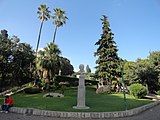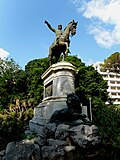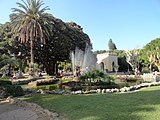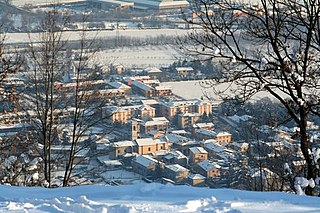
Collebeato is a town and comune in the province of Brescia, in Lombardy, Italy. It is located on the right bank of the river Mella, 5 kilometres (3.1 mi) north of Brescia.

Liberty style was the Italian variant of Art Nouveau, which flourished between about 1890 and 1914. It was also sometimes known as stile floreale, arte nuova, or stile moderno. It took its name from Arthur Lasenby Liberty and the store he founded in 1874 in London, Liberty Department Store, which specialized in importing ornaments, textiles and art objects from Japan and the Far East. Major Italian designers using the style included Ernesto Basile, Ettore De Maria Bergler, Vittorio Ducrot, Carlo Bugatti, Raimondo D'Aronco, Eugenio Quarti, and Galileo Chini.

The Teatro Massimo Vittorio Emanuele is an opera house and opera company located on the Piazza Verdi in Palermo, Sicily. It was dedicated to King Victor Emanuel II. It is the biggest in Italy, and one of the largest of Europe, renowned for its perfect acoustics.

The University of Palermo is a university located in Palermo, Italy, and founded in 1806. It is organized in 12 Faculties.

The Villa Doria Pamphili is a seventeenth-century villa with what is today the largest landscaped public park in Rome, Italy. It is located in the quarter of Monteverde, on the Gianicolo, just outside the Porta San Pancrazio in the ancient walls of Rome where the ancient road of the Via Aurelia commences.

Giuseppe "Pippo" Calò is an Italian mobster and member of the Sicilian Mafia in Porta Nuova. He was referred to as the "cassiere di Cosa Nostra" because he was heavily involved in the financial side of organized crime, primarily money laundering. He was arrested in 1985 and charged with ordering the murder of Roberto Calvi – nicknamed "Il banchiere di Dio" – of the Banco Ambrosiano in 1982, but was acquitted in 2007 due to "insufficient evidence" in a surprise verdict. After Calò was sentenced to 23 years' imprisonment as part of the 1986/87 Maxi Trial, he was sentenced to life imprisonment in 1989 for organising the 1984 Train 904 bombing. He was given several further life sentences between 1995 and 2002.

Giugliano in Campania, also known simply as Giugliano, is a city and comune in the Metropolitan City of Naples, Campania, Italy. As of 2017, it had some 124,000 inhabitants, making it the most populated Italian city that is not a provincial capital.
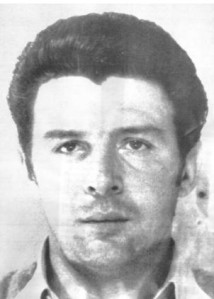
Vincenzo Puccio was a member of the Sicilian Mafia. He was from Palermo and joined the Ciaculli Mafia family sometime in the late 1970s, although like many other members of that particular family he operated a great deal under the orders of the Corleonesi.
The Second Mafia War was a period of conflict involving the Sicilian Mafia, mostly taking place from the late 1970s to the early 1990s and involved thousands of homicides. Sometimes referred to as The Great Mafia War or the Mattanza, it involved the entire Mafia and radically altered the power balance within the organization. In addition to the violence within the Mafia itself, there was violence against the state, including a campaign of deliberate assassinations of judges, prosecutors, detectives, politicians, activists and other ideological enemies. In turn, the war resulted in a major crackdown against the Mafia, helped by the pentiti, Mafiosi who collaborated with the authorities after losing so many friends and relatives to the fighting. In effect, the conflict helped end the secrecy of the Mafia.

Francesco "Ciccio" Madonia was the Mafia boss of the San Lorenzo-Pallavicino area in Palermo. In 1978 he became a member of the Sicilian Mafia Commission.
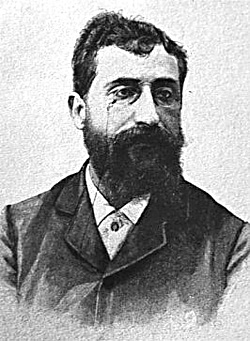
Ernesto Basile was an Italian architect and an exponent of modernisme and Liberty style, the Italian variant of Art Nouveau. His style was known for its eclectic fusion of ancient, medieval and modern elements.

Salvatore Riina, called Totò 'u Curtu, was an Italian mobster and chief of the Sicilian Mafia, known for a ruthless murder campaign that reached a peak in the early 1990s with the assassinations of Antimafia Commission prosecutors Giovanni Falcone and Paolo Borsellino, resulting in widespread public outcry and a major crackdown by the authorities. He was also known by the nicknames la belva and il capo dei capi.

Giovan Battista Filippo Basile was an Italian architect.

Saint George of the Genoese is a Renaissance-style, Roman Catholic church located near the port of La Cala, on Via Buon Pastore in the ancient quarter of the Loggia, in Palermo, region of Sicily, Italy.

Piazza Marina is a square of Palermo. It is located down the Cassaro street, in the quarter of the Kalsa, within the historic centre of Palermo. The square is dominated by the great Garibaldi Garden.

The Palazzo del Giardino or Palazzo Ducale del Giardino is a historic palace in the Parco Ducale in Parma. It is not to be confused with the official Parma residence of Marie Louise, Duchess of Parma between Palazzo della Pilotta and Palazzo della Provincia in what is now known as piazzale della Pace - she also lived at the Ducal Palace of Colorno and in the Casino dei Boschi in Sala Baganza. The main Ducal Palace in Parma, the Palazzo della Pilotta and the Reinach Theater were all destroyed in bombing on 13 May 1944.

The Apennine Colossus is a stone statue, approximately 11 m high, in the estate of the Villa Demidoff in Vaglia, Tuscany in Italy. Giambologna created the colossal figure, a personification of the Apennine mountains, in the late 1580s. It was constructed on the grounds of the Villa di Pratolino, a Renaissance villa that fell into disrepair and was replaced by the Villa Demidoff in the 1800s.

Benedetto Civiletti was an Italian sculptor, active mainly in his native Sicily. He is known for his Romantic-style public sculptures on allegorical, genre, or historical themes.

Kanaris at Chios, also known as The Kanaris brothers or The sailors of the English Garden, is a marble sculpture completed by Benedetto Civiletti in Palermo, Sicily in 1878. It represents Konstantinos Kanaris and Andreas Pipinos at Chios, as they were sailing on board a fireboat towards the Ottoman flagship of admiral Nasuhzade Ali Pasha. This event, known as the burning of the Ottoman flagship off Chios took place on the night of 18 June 1822 during the Greek War of Independence, and was a reprisal for the Chios massacre which occurred two months earlier. Two thousand Ottoman sailors were killed, including Nasuhzade Ali Pasha himself.

